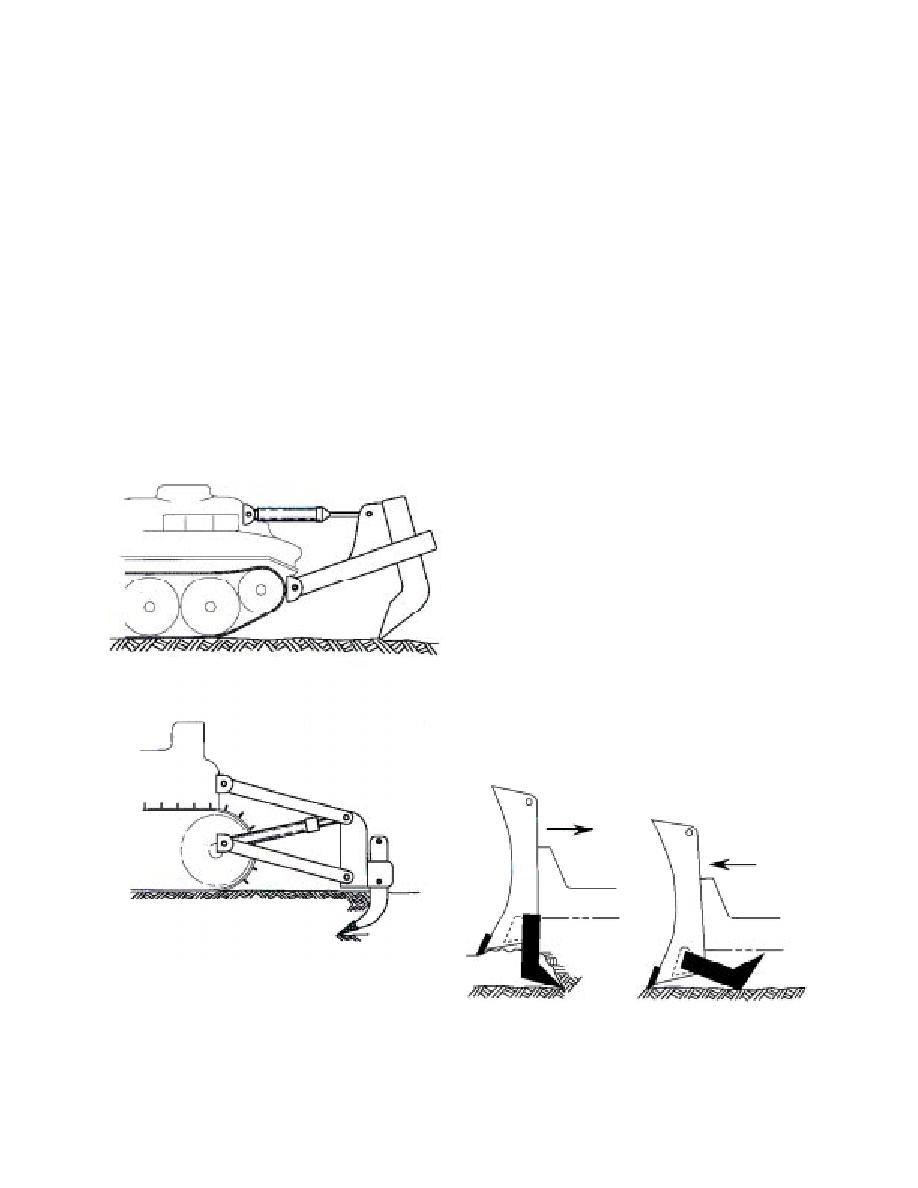
on the Russian T-34 tractor. Ripper tooth angles
TRACTOR-MOUNTED RIPPERS
change with depth with the radial system. The
parallelogram attachment (Fig. 1b) has the ad-
Rear-mounted rippers
vantage of maintaining the same ripper angle at
Crawler tractors have been fitted with a vari-
all depth settings. A single ripper is usually used
ety of ripping schemes, as mentioned in the fol-
to concentrate forces when ripping is difficult or
lowing discussion. Rear-mounted rippers are of-
when deep penetration is needed. Multiple rip-
ten fitted on modern crawler tractors and are
per arrangements are often used on large tractors
specifically designed by the manufacturer to
and when ripping is less difficult. Increased pro-
match machine characteristics. They are made for
ductivity and performance in hard ground and
a large range of tractor sizes with various ripper
rock is possible with new hybrid rippers that cre-
configurations and linkage designs for depth con-
ate high ripping forces at the ripper tooth using a
trol and adjustment. This type of ripper provides
hydraulically powered impact system.
the greatest penetration and highest productiv-
ity. Penetration depth using rippers on very large
machines can be as great as 4 to 5 ft (1.2 to 1.5 m)
Dozer back-rippers
Back-rippers are attached to the rear of a dozer
and range from 10 to 30 in. (0.25 to 0.75 m) on
machines of the D7 class and smaller.
blade in a manner that allows them to swing down
Rippers are hydraulically controlled through
into place for use when a tractor reverses. They
their linkage systems, with radial and parallelo-
rip and scarify a surface so that on a following
forward pass loosened material can be moved
gram attachments common. The radial system in
with the blade. These rippers do not interfere
Figure 1a is an idealized version of a ripper used
when dozing, since forward motion causes them
to swing to the rear from their upper connection
and drag along the ground as shown in Figure 2.
When not in use they can be moved up and se-
cured. These small blade-mounted rippers are in-
stalled on the Caterpillar DEUCE, and are also
fitted on the Army D7 bulldozer. Ripping with
this type of ripper is also discussed in FM 5-434
(U.S. Army 1992).
Removable ripper
attachment for dozers
a. Radial.
A less common commercial ripper attachment
is available for use on the moldboards of dozers
(moldboard refers to the curved metal plate that
makes up most of the blade on a dozer, snow, or
land plow; it is a continuation of the cutting edge
b. Parallelogram.
Figure 1. Idealized view of linkages commonly used for
attachment and adjustment of rear-mounted rippers.
Figure 2. Back-rippers attached to the rear of a dozer
Variants of these attachments have additional control
blade for ripping and scarifying.
for adjusting the angle of the ripper tooth.
2



 Previous Page
Previous Page
